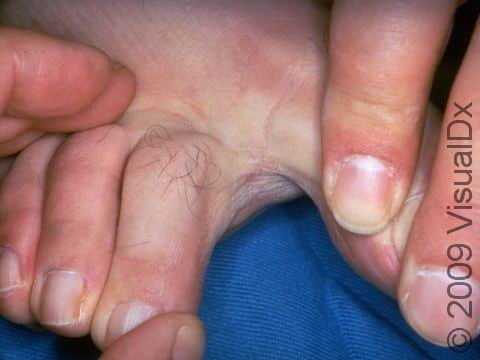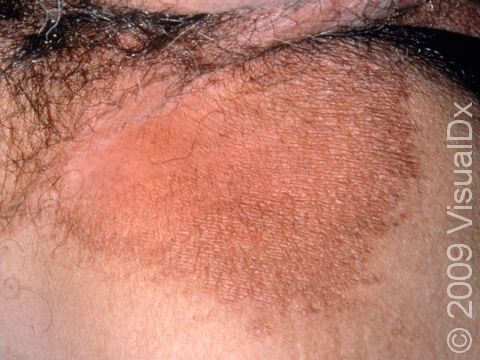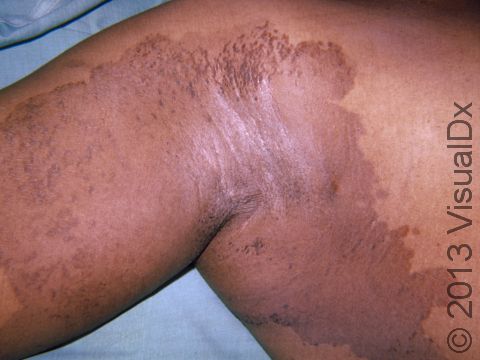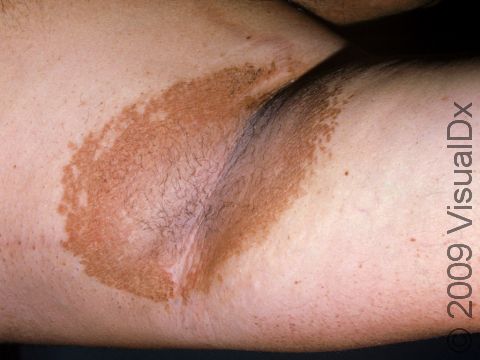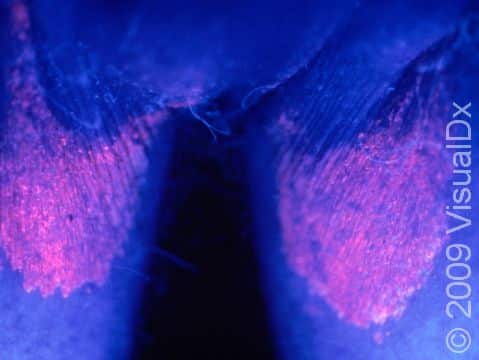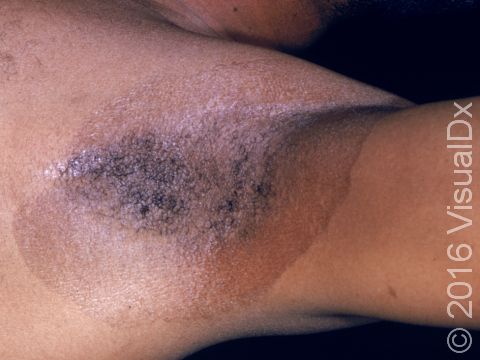Erythrasma
Erythrasma is an infection of the top layer of the skin caused by the bacterium called Corynebacterium minutissimum. The infection often occurs in skin folds, where skin touches skin, such as:
- Between the toes/fingers
- Genital area
- Armpits
- Under the breasts
They look like brown patches and are not painful.
Who's At Risk?
Erythrasma can occur in anyone. However, males are more likely to be affected than women. Geographic location can also be a contributing factor in developing this condition; Erythrasma is especially prevalent in those who live in the tropics and tend to sweat more. Obesity can also be a factor due to skin folds. In addition, those with diabetes and cancer more likely than the average person to develop erythrasma.
Signs & Symptoms
Erythrasma looks like a patch of pink to red, scaly skin. The border of erythrasma is well-defined, or sharply delineated from normal skin. Over time, the pink or red color fades to tan or brown.
Erythrasma is typically located in moist body folds such as:
- Under the arms (axillae)
- In the groin and inner thighs
- Between the toes, especially between the 4th and 5th toes
Less commonly, erythrasma can be found in the buttock crevice or in the folds underneath the breasts. In certain individuals, especially in those with diabetes, the infection can become widespread and can involve the trunk, arms, and legs.
Erythrasma usually causes no symptoms, but some people report mild itching or burning, especially in the groin area.
Self-Care Guidelines
If you suspect that you have erythrasma, try:
- Gently scrubbing the involved area with antibacterial soap
- Keeping the involved area dry
- Applying over-the-counter creams containing tolnaftate or miconazole
Treatments
Once the diagnosis of erythrasma is established, the doctor may try one of the following treatments:
- Topical antibiotic lotions such as erythromycin or clindamycin
- Whitfield’s ointment (a mixture of benzoic acid and salicylic acid)
- Aluminum chloride solution to inhibit sweating and moisture
- Oral antibiotics such as erythromycin or clarithromycin
Visit Urgency
If the involved skin does not improve with self-care measures, then you should make an appointment to see a health care provider.
References
Bolognia, Jean L., ed. Dermatology, pp.1110, 1128. New York: Mosby, 2003.
Freedberg, Irwin M., ed. Fitzpatrick’s Dermatology in General Medicine. 6th ed, pp.1102, 1848, 1876-1877. New York: McGraw-Hill, 2003.
Last modified on August 16th, 2022 at 2:45 pm

Not sure what to look for?
Try our new Rash and Skin Condition Finder
